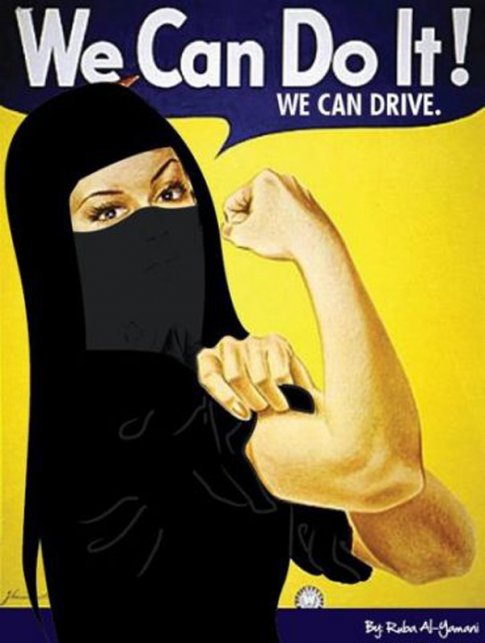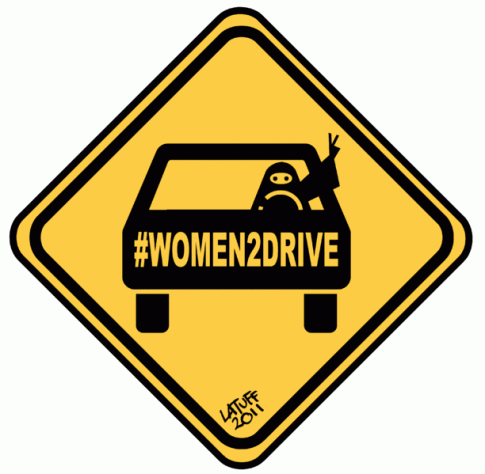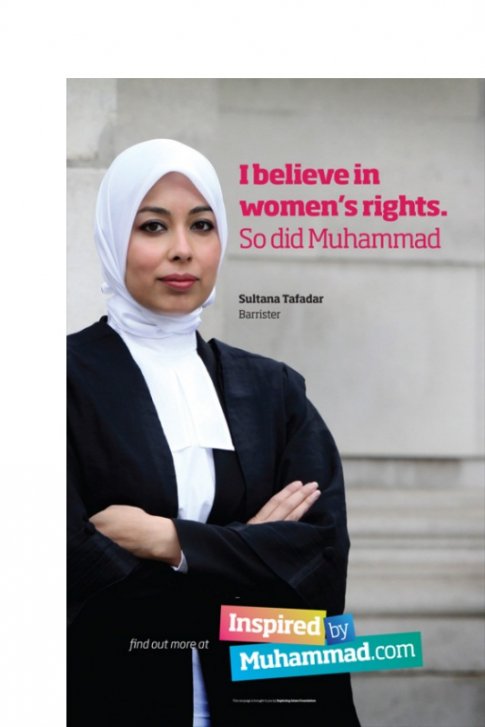Ashton Kutcher Isn't No Cowboy.
The Academy Of Country Music Awards were last night and Ashton Kutcher found someone else’s invitation and went to the show.
So, of course he looked like a complete idiot in a cowboy jacket and hat. Now, true… most people in this outfit would look like a complete idiot, but I just read that he might star in a indie biopic about Steve Jobs, so he looks like even more of a moron.

COUNTRY
DOUCHE
Via: Rocco's Revolution
(apparently Mr. Kutcher insulted the whole country music community. Rawhide!!)
Hundreds of Dead Dolphins Wash Ashore
On beaches in Peru well over 600 dead dolphins have been found by conservationists from an organization called BlueVoice.org. The head of this group was quoted in MSNBC as saying the deceased dolphin count is 615, but on the the Blue Voice blog, the number was said to be potentially much higher by a marine mammal rescue director in Peru. In fact the Blue Voice blog says the stranding could be the largest dolphin mortality event yet recorded.
“I was stunned to hear we’d counted over 200 dolphins. We hit a length of beach no more than 100 yards long in which we found ten dolphins of varying levels of decomposition. The numbers continued to mount. By the time the rising tide forced us off the beach the count had reached 615, counted over 135 kilometers,” said a Blue Voice employee who visited Peru.
It sounds like there could be many more. It isn’t clear yet exactly what caused the deaths. One speculation is sonic testing conducted by oil companies, because it is believed the very loud noises can cause internal bleeding in dolphins. (Sound travels faster in water, than in air.)
“We have been noting that the animals were suffering from acute decompression syndrome – that is to say, a violent death produced by an acoustic boom that disorients the animal and produces haemorrhages which cause the animal to end up dying on the beach,” said ORCA director Dr Carlos Yaipen. (Source: 3news) Another speculation is that a disease caused an epidemic.
In the United States an increase in deadly dolphin strandings in the Gulf has been tied to habitat damage due to the huge oil catastrophe, a situation which is ongoing because there is still some oil in the Gulf.
Found

Why are hundreds of dead dolphins ending up on the coast of Peru?
Whoa: Over 600 Dolpins
Via: Care2
by: Jack Richardson
Dead!
5 Legged Dog
"How many legs does a dog have if you call the tail a leg? Four. Calling a tail a leg doesn't make it a leg."

- Abraham Lincoln
Mr. and Mrs Pac Man get Married
Pac Man Wedding Cake? Yeah!!

I love that grooms' cakes can be a way to interject a little fun into wedding receptions, especially when they perfectly capture a groom's personality. This Pac Mac groom's cake from The Domestic Scientist is a perfect example. Complete with a keepsake Sculpey topper, it was a huge hit with the groom. Read more about how and why it was made over on The Domestic Scientist blog.

Via: Craft Zine
Legs & Lipstick: The Barbie Issue
Legs & Lipstick



Issue N°1
Het was liefde op het eerste gezicht...Barbie and me!
en zoveel jaren later (ook al zijn mijn Barbies al vele jaren op vakantie naar een tropisch eiland ergens op zolder)
zijn we nog steeds –in a way- very close.
Jarenlang speelden we dress up , gingen we van gala bal, naar glamour party, traden we op voor duizenden mensen , zongen de sterren van de hemel en deden we fotoshoots! (om nog maar van de onderlinge catfights te zwijgen...én de avontuurtjes met en ruzies rond Ken!!)
Nu valt het mij op dat élk meisje nog steeds een klein beetje Barbie in zich heeft (en ik geef toe, de één al meer dan de ander ...) ,
maar wie poseert niet graag (of stiekem) als vriendin A. haar camera bovenhaalt, kiest niet de mooiste foto voor haar facebook profiel uit en wie gaat er niet af en toe op ellenlange shoppingtrips of spendeert enkele uurtjes voor de spiegel om dé perfecte look voor de avond te creëren ?
Ik pleit schuldig!
Het is niet voor niets dat Barbie verschillende outfits had, denk ik dan, een mens moet wel ‘keuze’ hebben!
En waarom willen we in dit belgenland (met het bijhorende fantastische weer) toch met een cabrio rijden? I say BLAME BARBIE!
En ook al ben ik zelf niet voor de met make-up geplamuurde gezichten (die men vaak Barbies noemt), ik moet toegeven dat ik zoveel jaren later niet meer met Barbie speel, maar veel van haar geleerd en overgenomen heb.
Ik heb ondertussen mijn perfecte Ken gevonden ( al noemt ie niet Ken, maar Peter) en speel ik nog steeds dress-up
(maar dit hoort bij m’n job!!hoereej hoereej)
En hoewel de vraag ‘Ben ik niet té oppervlakkig bezig?’ regelmatig mijn hersenkronkels kriebelt
en ik niet eens wil weten hoeveel boeken ik had kunnen lezen als ik alle tijd die ik op facebook zat / op fashionsites of –trips was
en voor de spiegel stond zou optellen... we hoeven ons niet schuldig te voelen!
(en ik zeg ‘we’ omdat ik weet dat ik niet de enige ben! ;-) )
We hebben een job (of zijn actief op zoek of aan het studeren), we’re making our own money, gaan voor onze dromen, voeden kinderen op of sommigen onder ons redden misschien de wereld , zeehondjes of straatkatten
(of occasionally a spider, als we ze niet dood laten trappen, maar laten buitenzetten door Ken)
DUS... Een vleugje glamour af en toe kan geen kwaad!
Ook Ken is niet veel veranderd trouwens! Hij speelt na al die jaren nog steeds spelletjes met auto’s,
laat de ene de andere afslachten of bouwt forten en kastelen.
Al heeft ie niet meer effectief de autootjes, actie figuurtjes of legoblokken, maar wel een playstation bakje in z’n handen én als je geluk hebt een schroevendraaier of een hamer (een nagel in de muur slaan, lukt de doorsnee Ken nog wel, toch?)
Anyway, laat Barbie dus geen scheldwoord meer zijn...
Noem haar dan aub Stacey of Shelby (cause there is a difference u knooow! ;-) )
Xoxo,
Iana
Page 1
------------------------------------------------------------------------------------------------------------------------------------------------
Voorwoord


The Barbie Issue

Index

The Barbie Issue
Fashion
S (van Spotted én Styling)
oftewel: een paar fantastisch gestylede girls gespot on the web!
IT - Girl/ Fashionista
elke issue bombarderen we iemand tot IT-Girl/ Fashionista van de maand
we nemen een kijkje in haar leven, interesses én haar garderobe in:
A look in the life of...
Skullmania
Stephanie's Private Life
In The Closet
FART = Fashionable ART
Fashionista's with a heart for art
Hair & Beauty
De Doe-het-zelf Rubriek
selfmade hair- & beautyguru’s tonen hoe het moet!
-----------------------------------------------------------------------------------------------------------------------------------------------------------------------------------------------------------
Page 2
S

van Spotted én Styling
oftewel: een paar fantastisch gestylede
girls on the web!















---------------------------------------------------------------------------------------------------------------------------------------------------------
Page 3






Stephanie Lopes Simoes
"Zo baas, zo hond" / "Zo dier, zo baas" , het zijn gezegdes die voor deze Belgische schone zeker opgaan. Niet alleen is haar huisdier (geen hond, maar) de meest zalige kat die we hier bij Legs & Lipstick ooit gezien hebben, Miss Lopes ziet er niet uit om zonder handschoenen aan te pakken, komt altijd wel op haar pootjes terecht én is in het bezit van de most amazing cat eyes ever seen! We present to you: de koninging der katachtigen, Stephanie Lopes Simoes
Invasion of Privacy
A look in the life of
Stephanie Lopes Simoes
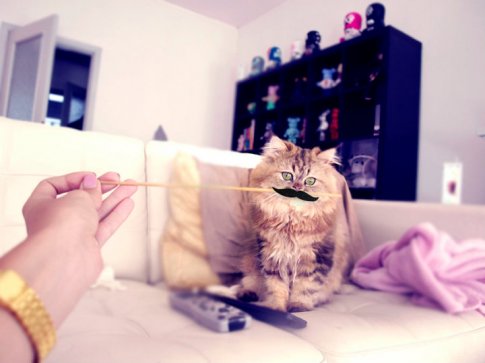

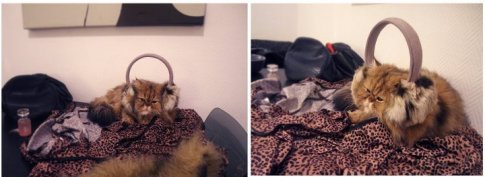
"Boedha"
is his name!
Stephanie has 2 other cats named Tigro & Joshi
"The living room"
With Boedha in the picture below & Joshi in the left
----------------------------------------------------------------------------------------------------------------------------------------------------------
page 4
FEMALE
1.67 cm
Born in 1987
Graphic Designer
Works in a boutique
Things u r passionate about : Kleren, mijn katten en gewoon ontwerpen!
Favourite Food : Sushi! En carne porc alentejano, iets portugees :)
Favourite Drink(s) : Ananassap
Favourite Colour(s ): Groenblauw...
Best way(s) of spending time : Rustig op mijn gemak shoppen,of gewoon rusten ergens iets lekkers eten
Favourite Shops : Enes, Zara, AllSaints
Favourite Online Shops : Asos, Nastygal, Romwe, Surfstitch
Favourite Films / Series : 24, The sopranos, Spartacus, Weeds, Californication
Style Icon : Elin Kling
Looks up to : Myn mam!
Favourite Websites : Ik zit vooral op blogs :)
Favourite Music : Alles wat goed klinkt!
SHOP TIP : Romwe! Asos kent iedereen wel wss,
maar als ze het nog niet zouden kennen zeker een kijkje gaan nemen ! :)
Must have(s) Summer ’12 : Toffe schoentjes met studs , maar ook gewoon nieuwe wedge sneakers,
maar dan wel van Giuseppe Zanotti
TREND ❤ : Ombre haar heb ik al lang en is ondertussen ook wel overal te zien, maar ik ben niet iemand die heel hard met trends bezig is, als ik iets moois zie koop ik het, zelf al is het geen "trend"
PLACE TO BE next month/summer : Ik ga deze zomer naar Zanzibar!! Ik zit graag in landen met een tropisch klimaat. Ik zou mensen ook willen aanraden om eens naar brazilie te gaan: super weertje, super mensen en heel lekker eten, gewoon een tof sfeertje!

Etsy (etsy.com) $46


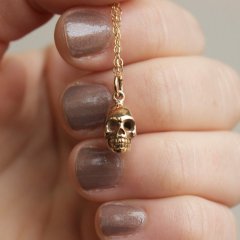
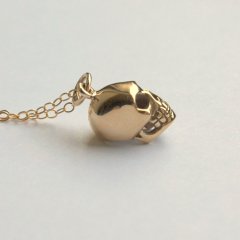
Etsy (etsy.com) $52
Etsy (etsy.com) $26
SkullMania








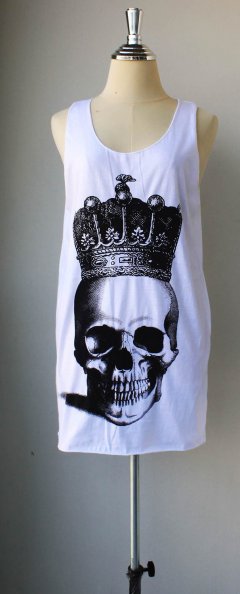
<-- Etsy (etsy.com) $59
Rings $29
Necklace $10
Studs $3.69
Cigarette Holder $48
Shirt $15.99
All from
Etsy.com

Stephanie Lopes Simoes
----------------------------------------------------------------------------------------------------------------------------------------------------------
page 5


Nina (The best friend)
Cédric (le boyfriend)
-----------------------------------------------------------------------------------------------------------------------------------------------------------
page 6

In the Closet
"Neuzen" ... Niets is zo leuk als neuzen! Niet het lichaamsdeel, wel het werkwoord (kort voor rondneuzen)!
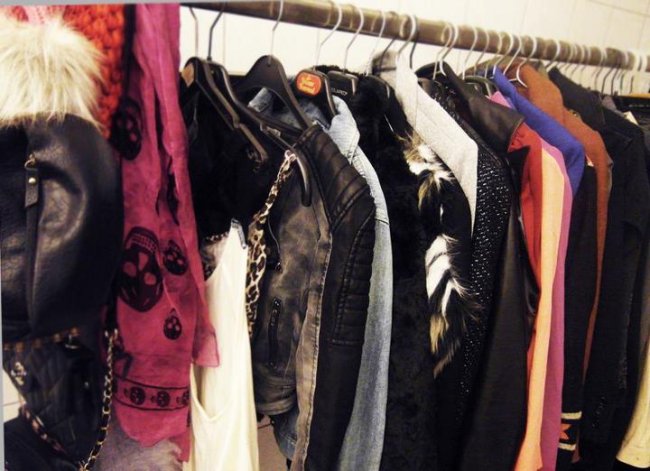





In America noemen ze het "snooping around" en laat dit nu net één van onze talenten zijn!
"Neuzen" in andermans private life, huis, maar vooral in zijn of haar kledingskast/dressing !
The Jacket Collection
skullmania
accessorize
Les Favorites
Romwe, Asos
&
Vivienne Westwood
Vintage CHANEL
S S S SHOES
Different colours & prints
-----------------------------------------------------------------------------------------------------------------------------------------------------------
page 7
Je bent grafisch ontwerper van opleiding, maar werkt nu in een boetiek.
Vanwaar deze keuze?
Het was zeer moeilijk werk te vinden zonder "werkervaring". In de grafishe sector is er sowieso weinig plaats voor vast werk en als freelancer overleven is écht niet evident, maar ik heb het geluk gehad te kunnen beginnen werken in een kleine boetiek.
Wil je full time grafisch designer worden of eerder blijven in de mode?
Als ik het zou kunnen combineren zou het PERFECT zijn :) (Dit kan als ik bv. voor een modemagazine zou werken ...)
(Dit kan als ik bv. voor een modemagazine zou werken ...)
Op je site en facebook zijn veel van je werkjes te bewonderen en kunnen we ook tassen zien met jouw werk erop geprint,
zijn deze te ergens koop?
Vroeger was het te koop (o.a. zakken met mijn werk op geprint) maar ik heb veel weggeven omdat ik nog niet 100% tevreden was over de kwaliteit van de print en zak, en als ik iets doe wil ik er toch wel het beste uithalen. :-)
Nooit gedacht om tanktops en shirts met jouw designs te verkopen?
Zal er ooit wel eens aan beginnen. Heb wel eens 1 tshirt voor mezelf gemaakt met 1 van mijn eigen ontwerpen erop :)
Vanwaar haal je je inspiratie en talent? En teken je al van kindsaf aan?
Inspiratie haal ik vaak van fotos, magazines en ook van andere ontwerpers. Tekenen doe ik idd al van kleinsaf aan (bv. als we uiteten gingen, moest ik altijd wel een pen en een schetsboekje bij me hebben of toch iets waar ik op kon tekenen. :-)
Je surft veel naar blogs en fashionsites en hebt een uitstekend oog voor mode. Nooit gedacht om zelf een blog te beginnen of iets te doen met mode/styling? Niet direct, maar zeg nooit nooit :)
Zie of hoor je hen dan vaak? Mis je hen? Ik zie mijn familie van portugal 1 keer per jaar. Mijn papa zie ik spijtig genoeg niet vaak omdat die ook altijd in het buitenland werkt en woont.
Op facebook zien we ook soms foto’s van je vriend Cédric, zit hij in dezelfde branche? Hoelang zijn jullie al samen en hoe hebben jullie elkaar leren kennen?
Nee helemaal niet , hij zit in de auto sector :) We zijn nu binnen 3 maand ongeveer 5 jaar samen. We hebben elkaar eigelijk leren kennen via myspace. :)
We zijn nu binnen 3 maand ongeveer 5 jaar samen. We hebben elkaar eigelijk leren kennen via myspace. :)
Steunt hij jou in wat je doet? En hebben jullie dezelfde interesse’s of helemaal niet? Hij steunt me zeker in wat ik doe en is altijd zeer dol op mijn werk :) Hij is er écht fier op! Ik heb ook super veel geluk dat we dezelfde interesse's hebben qua wonen, kleren, eten ...
Hij is er écht fier op! Ik heb ook super veel geluk dat we dezelfde interesse's hebben qua wonen, kleren, eten ...
We zien regelmatig foto’s van je katten, hoe noemen ze en wie was er eerst? We hebben drie katjes, 2 persische katjes en 1 ragdoll. De eerste was Tigro, de dikste en de grijze kat :) En dan hebben we Boedha (ros) de kleinste van de hoop . De laatste is ons Joshi de grootste en de tamste dat we hebben .
En dan hebben we Boedha (ros) de kleinste van de hoop . De laatste is ons Joshi de grootste en de tamste dat we hebben .
Wat maakt jou gelukkig en hoe ziet je ideale leven er uit? Zon ,eten & mensen rondom mij die ik graag heb. De kleinste dingen kunnen me echt gelukkige maken :)
Mijn ideale leven ? Gewoon kunnen doen wat dat ik graag doe en gezond zijn! Het is cliché, maar je hebt het nodig :)
Stephanie's Private Life

Je spreekt vloeiend Portugees , ben je in Portugal of België geboren? Ik ben geboren in Zuid Afrika, in Summer Set West :) Heb er gewoond tot mijn 4/5 jaar.
Heb er gewoond tot mijn 4/5 jaar.
Heb je een portugese mama of papa of familie die daar nog leven? Mijn papa werkt in Brazilië, mijn mama woont hier in België. Mijn familie woont nogal verspreid, sommige in Portugal, anderen in Zuid Afrika en Brazilië.
pag. 3
pag. 4
pag. 4
pag. 4
pag. 5
pag. 6
pag. 7
pag. 8
F art
(= Fashionable Art)
"De tijden dat men bij het wood “fart” aan onaangename gassen en geurtjes denkt zijn voorbij, want deze rubriek noemt FART en staat voor Fashionable Art.
Elke maand kijken we naar het werk van een creatieve fashionista. Grafisch design, schilderkunst, nail-art, special hair & make-up, mode-ontwerp,...
alles komt aan bod!" Deze maand in de kijker: Stefanie Lisabeth!
Voor "Choopapah" maakt ze tepelnapjes in allerlei vormen en kleuren,
ze schildert én werkt als make-up artist.















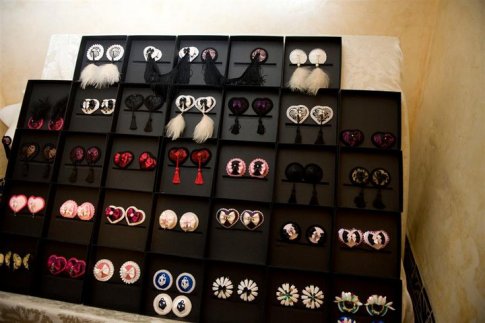
Some of her paintings
work in progress
Work in progress
work in progress
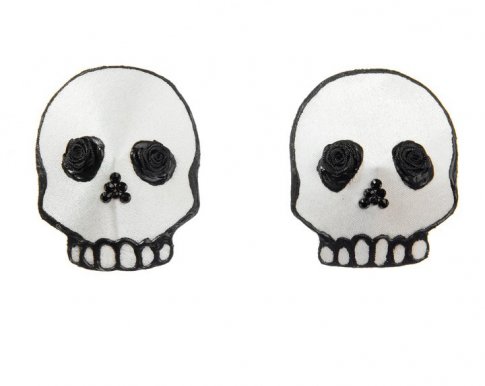
skullmania

------------------------------------------------------------------------------------------------------------------------------------------------------------
page 8
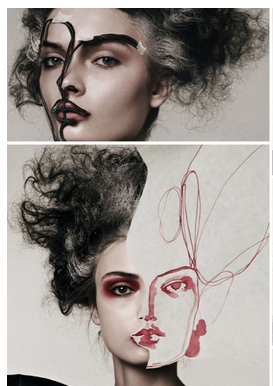
hair & beauty
pag. 9
----------------------------------------------------------------------------------------------------------------------------------------------------------
IT AIN'T EASY BEING SLEAZY B VICIOUS! I really dig this girl. She's 24 and based out of LA. She just started taking photos not to long ago, but as you can see she's really easy to look at. :-) If you would like to follow what she's doing check out her Twitter. (@b-vicious) Photo was taken by Volve Photography 43 Reasons to Love a Monday Night Monday? Who likes Monday? For most, it's the start of the work week and a reminder that the weekend is still another four days away. Many of us are happy to get the day over with and out of the way. Or so goes the mentality of a lot of folks out there working to live, spending 8 hours in a box doing something they'd rather not be doing. While a job or career change may not be on your horizon, there are plenty of events and activities going down in our pretty city to inject a whole lot of fun into any day of the week – even a Monday. Last night, in particular, I found 43 ways to love my Monday night. And the best part? It came pre-packaged and ready in one bottle at the April meet of the Calgary Bartenders Association. The insiders say its a bit tricky to mix with and still create a balanced drink because Licor 43's own taste is so strong. But with the two sample cocktails on-site, you'd never know it. Nathan with Milk Tiger was pouring up an engaging Sour, and Stephen with Model Milk had the Oh Julius on hand for guests to enjoy. Topped with a bit of froth (is that a raw egg he dropped into the mix?), he was peddling it as an adult version of the Orange Julius. Move over mamosas, there's a new hangover cure in town. Moving beyond the drinks,Diner Deluxeprepared some nibbles. Chocolate-filled pastries, bite-sized oatmeal in a spoon, and mini-eggs benny were the highlights for me. And the egg decorating station over by the window was a cute touch. The Calgary Bartenders Associationis an association of hospitality minded people in Calgary, Alberta and Canada. Every month, they host an event open to the industry and the public to educate and open the palates of imbibers in a fun atmosphere. Care to try some Licor 43? You'll find it in most Calgary Coop locations, Crowfoot Liquor Store, Highlander Liquor Store, L Store, Willow Park, Zyn and Canadian Liquor Store. For the location nearest you, visit LiquorConnect.com. Licor 43 is made from 43 natural ingredients, with fruits and herbs from the Mediterranean basin. EnterLicor 43,a liqueur out of Spain made from 43 natural ingredients, with fruits and herbs from the Mediterranean basin. On its own, I'd call it a sweet sipper. It's a wee bit thick in its consistency, which in my mind makes for a lovely glass to sup slowly. I wonder what it would taste like poured over ice cream, or used in some ridiculously delicious dessert that would soak up the flavours? Thirsty Monkey McAllen,texas in Entertainment district downtown, 17th street. "Erasing Boogie" Kiki Valdes - Oil, acyrlic on canvas. I found this photo of this painting I did a few years ago. It was a painting I was working on then I started layering it with older paintings and ideas I never finished, basically in some ways I resolved this painting with previous ideas from other works and studies. When you double click this text box you can change the text, style, color and fonts. You’ve seen asymmetrical lacing from the Nike before, but the casual comfort and unique look of the Footscape Free Premium takes this already popular model to new heights. This latest design from Nike features a buttery black leather upper, set off by a premium tan leather sockliner with a white Nike Free sole unit. While it is tempting to call this silhouette minimalist or muted, getting your hands on this model will quickly demonstrate that Nike has just elevated their game to give you a new leader among your sneaker collection. A small Swoosh on the toe and criss-cross tonal laces finish the look. These classics waiting to happen are available now at Japan. "Every man deserves a second chance, girl." - Driis McAllen, texas is a place for the future of music especially DJ's. The 17th. street entertainment district is growing fast as it can but, we need people the right kind of people to go to the clubs. Right now the music is 3 nights a week from 11 to 2 in the mourning thursday thru saturday night. There are other clubs open like the PEACOCK BAR IT is small but it has the best shots on monday nights on 17th.st. When you double click this text box you can change the text, style, color and fonts. My abuelo, to me was one my greatest influences in my life. His greatest accomplishment was his talent club were the kids from ybor city performed on the radio. When you double click this text box you can change the text, style, color and fonts. I love Converse and I love DC Comics, so this collaboration is pretty perfect! For Spring, the Converse Chuck Taylor All Star gets a makeover in Wonder Woman and Killer Croc designs. Fun! The shoes are currently available at journeys.com for $60. Further Exploration Gender and Education Online Resources: - http://www.wix.com/themissgproject/ - http://www.ungei.org/resources/ files/Education_from_a_Gender_ Equality_Perspective.pdf - http://www.womendeliver.org/ knowledge-center/facts-figures/girls-education/ - http://www.oxfam.org/en/campaigns Films: - License to Thrive: Title IX at 35 This short length documentary about a breakthrough piece of legislation in the United States is a must see for all of those who are passionate about increasing female participation and leadership in universities and other dominant institutions. Written and Directed by Theresa Moore in 2008, License to Thrive: Title IX at 35 engages the audience with personal stories of triumph and success that followed after Title IX was implemented as part of the Education Amendments of 1972. This amendment was revolutionary as it forbids any collegiate institute in the United States from rejecting or denying anybody’s rights based on sex and/or gender. It goes over the barriers women in education faced prior to Title IX and then talks about various female organizations, programs and grants that were founded as a result of Title IX. Empowerment through Art Film Review: Born into Brothels Born Into Brothels is a documentary about the inspiring non-profit foundation Kids With Cameras, which teaches photography skills to children in the red-light district of Calcutta. In 1998, New York-based photographer Zana Briski started photographing prostitutes in the red-light district of Calcutta. She eventually developed a relationship with their children, who were fascinated by her equipment. After several years of learning in workshops with Briski, the kids created their own photographs with point-and-shoot 35 mm cameras. The film discusses the discrimination these children face baced on caste and gender, and in great detail explores their troubling lives. The proceeds of the film go directly to funding the children's education. It is a hearthwrenching fulm, but does a great job of illustrating the stigma associated with women who participate in sex work. Women's Rights in Saudi Arabia Film Review: (Un)veiled: Muslim Women Talk About Hijab This documentary shows just how varied and diverse the Muslim world is from country to country, counter to the monolithic image that many non-Muslims have of Muslim culture. The movie demonstrates how different upbringings in different cultures greatly influence religious practices, specifically with regards to Hijab, and through speaking with Muslim women from across the globe it shows that Muslim culture and beliefs are just as wide ranging as Judaeo-Christian ones, with as many debates and disagreements about the best interpretation of scripture, the role of Islam in the modern world, and the rights of Muslim women. Understanding Ourselves and Our World Book Review: Culture Jam: The Uncooling of America by Kalle lasn Culture Jam is a book which explores some of the most serious issues facing modern Western Society and how they relate to the enormous amount of advertising and media exposure we are witness to on a daily basis. The Book identifies how constant bombardment by media and our obsession with consumerism are shaping not only our wallets, but our health, sexuality, and mental well-being. By exploring rising rates of depression, anxiety, and social disorders in relation to the surge in media exposure, as well as discussing gender norms and identification in relation to media, Culture Jam points out the best of the worst things about Western Culture. This book is perfect for gaining a basic understanding of why we think the way we do, and is complimentary to any study which acknowledges media influence in the way we live. How does Gender define us, and furthermore, how does that definition bind us? Based on one’s gender, they are expected to adhere to a particular set of instructions, given to them by society so they may fit in and be accepted. The moment someone steps outside of these constructs or shows any form of dissent to them, it seems all heads in the room immediately rotate in unison as to suggest it is not permissible. As social beings, it is important to be aware of the effects of the social structures we uphold. Where did these rules come from, and how exactly have they become so engrained into our minds, that we cannot remember a time that we were not mentally bound by them? More importantly, how have these rules been defined by myths of gender, and how does society perpetuate them? We place too much faith and show a generous amount of compliance toward our society and certain social structures which hold us within its constructs. Moving past simply observing at the way in which media affects how we dress and speak, one should take note at how these social institutions construct, manipulate and perpetuate the way we act, think, dress, speak, love, and live, solely based on the things found between our legs. Furthermore, we should begin to deconstruct the system to see that it is also affecting the opportunities one will be presented with in life based on socially constructed ideas about themselves, and those around them based, again, on the parts located in ones nether regions. This is one major downfall of global society; that we have constructed it to support these ideas, and that those ideas maintain the structure. In short, I ultimately wish to point out that it is not the penis, nor the vagina, that is a valid measurement of ones’ strength, intelligence, capacity to love, nor are they a tool of measurement of ones’ ability in life. enforced not long ago in 2005 when Harvard President Lawrence Summers stated that is was women’s’ innate deficiencies in math and science which prevented their rise to top positions in those fields, not discrimination.[1]A study related to this myth was performed at the University of Texas on the differences in scores on math tests between genders; this was based on the common misconception (which even Harvard Representatives apparently are not immune to), that men are better at math than women. The study used two separate groups; one in which the students were primed to think about how women were more likely be worse at math, and the other primed to think about “gender neutral” subjects. The study showed that the reinforcement of the stereotype that women are generally more poor at math actually caused the women to do poorly.[2] It was essentially a self-fulfilling prophecy. There are a series of basic myths, of which I shall mention only a few, which are constructed through misunderstanding or lack of understanding all together, which plague our society and many others around the world. They influence our social structures to the point where they become “just the way it is”; they become institutionalized, and as a result become part of the framework of our societies and go un-noticed. I aim to point out a few key myths which would appear to weave throughout the foundations of the globe. Intelligence: ‘Men are more intelligent than women’ or, ‘men are better at understanding more technical information’. Believe it or not, this myth is still held in the minds of many people throughout North America, and certainly throughout the world as is evident in social media and academic study. Though there does exist a resistance to this mood. Optimistically, this may be a dying breed of thought; however societies throughout the world, including the West, are constructed on this very myth. Intelligence has been a hot point on the topic of gender throughout history, and has shaped the way our society is structured; in our case, it was a patriarchal design where men stood supreme in intelligence and understanding. This idea was “High school girls who think of math as a “male thing” are less likely to go on in math and are less likely to do well in math”.[iii] It is the young age at which we begin to embrace our roles in society that is disheartening. “Would you like a girl toy, or a boy toy?”, we hear going through the drive-thru at McDonalds. It is at this young age when we are learning to speak and walk that is the point at which our gender identities are formed. Interacting in Kindergarten, we are already being primed to think and act like our gender. Render By Gender This raises more questions; like how many other things are affected by the “facts” we know and have known since we were old enough to speak? Only in the last century have we begun to see an alteration or phasing out of these gender norms, biases, and structural inequalities which have been based on a myth that each gender is inherently different in every way imaginable. Furthermore, that each is allocated certain roles in life, not by society, but by their chromosomes. It is myths which have provided history with gems such as the female inability to do math, her inability to understand complex scientific thought, a female’s lack of knowledge to make an informed vote. Furthermore, that if she demonstrates intelligence higher than that of a potato, it designates her to be a user of the black arts. These are myths from a variety of periods throughout history dating back hundreds of years or more. However, myth has affected laws, religious beliefs, and practices throughout the world and its history. These myths in turn not only affect women, but men as well Myth 2: ‘Men are natural leaders and breadwinners’ – ‘the woman’s place is in the home’. This is a myth which in the West, is in the beginning of its decline; or I would at least hope so, as more males take on roles that would traditionally have sent them into exile from the world of men, and women take on roles which would have seemed out of place for them just ten to fifteen years ago. However, again, much of the developing world is built on the ‘fact’ that men are natural breadwinners and that women should not work outside the home, or at all.[i] The social discrimination faced by a man who may not be very good at providing for his family is made worse when the same discrimination and stigma prevents his wife from aiding him in earning an income. In certain areas of the world where these stigmas hold strong, a woman and her family may be thrown into poverty due to the loss of a husband, father, or brother due to the sheer disapproval and shame associated with working.[ii]Though there may not be laws which directly impose these values on society, their existence in the beliefs of those in charge, results in a lack of initiative to end these stigmas. We have expectations placed on us the moment our gender is identified before or after birth. For example, the idea in society that a male must be the breadwinner, must be head of the household, must be strong and must not stray from the masculine ideal is pushed on us, still. It is enforced by what we see through television and in magazines, by parents, and even by elected officials.[i]There are still members of society who believe, that to follow a discourse of gender roles and dismiss the existence of inherent abilities unique to a particular gender, is to break down the fabric of our society. In short, yes, that is exactly what it is. The fabric is tattered and stained, and needs replacing. It is time that we begin a worldwide reflection on the ways we think and why we think them, especially with regards to gender. On this note: --------------------------------------------------------------------------------------------------------------------- Taking into account that we have these subconscious beliefs or assumptions of the role of each gender, we should then analyze the effect these assumptions have had on the structure and opportunities presented to each gender in society. One may argue against any remaining gender inequality in the workforce; that feminists have no valid stance when claiming that, to this day, there is still income inequality based on sex or gender. Unfortunately, the legacies of a patriarchal society which still remains today maintain an unequal playing field with regard to occupation and income. Though it is illegal to pay a woman less than a man for her labor, as set forward in the Canadian Charter of Rights and Freedoms, it is not in fact illegal to set the value of certain work to be worth lower wage earnings than others, such as traditional women’s’ occupations. An example of such being nursing and nutrition.[i]The society which reined throughout the early twentieth century generally maintained values which confined women to certain areas of labor such as domestic work, secretarial work, primary and secondary education, and occupations which were believed or deemed to be less deserving of greater pay. This labor was undervalued, and thus, the now, “Women’s’ work”, was deserving of less pay than “Mans’ work”.[ii]The traditionally female dominated fields of work which were seen as deserving of less pay were education, nursing, nutrition, secretarial work, textiles, phone operator service, and garment work, among others; which remains in place today.[iii]It would seem more so now, that these gaps were not mended, but were abandoned as women began moving into male dominated fields of occupation, creating the perception that there is now in effect, income equality. The point of this is to draw fact to the effects that myths of gender have had on the workforce regarding female abilities, not due to her academic capabilities or physical characteristics, but because of her gender. The resultant construction and allocation of “Women’s Work” has resulted in undervalued, and institutionalized pay standards in those fields. Now, in the twenty first century, it may be hopeful or idealistic to say we may be moving toward such a discourse which counters these myths, and as a result sends us into a regression from these values and practices, due to academic influence. However, there still remains a clear income gap, media influenced gender roles, and the perpetuation of the classic myths which brought us to this mess in the first place. It is necessary that this discourse be spilled out from the higher learning institutions, and into the secondary learning, middles school, and elementary institutions. There needs to be understanding of the origins of our thought and resulting structures in order to mend the misplacement of value and backwardness of society. We need this in order to ensure that in the future, each person is met and known as a human first and judged accordingly; that being that regardless of gender, as a human being, they are capable of anything without restriction by those parts of their anatomy which are irrelevant in the first place. By Ryan Fernandez ---------------------------------------------------------- ------------------------------------------------------------------ -------------------------------------------------------------------------------------------------------------------------------- [1] Barnett, R., & Rivers, C. (2004). Same difference, how gender myths are hurting our relationships, our children, and our jobs. New York: Basic Books. [2] P, B., & R, J. (1999). A burden of proof: Stereotype relevance and gender differences in math performance. In Journal of personality and Social psychology (76 ed. pp. 246-257). Retrieved from http://homepage.psy.utexas.edu/homepage/faculty/josephs/pdf_documents/Brown_Josephs.pdf [iii] Campbell, B., & Storo, N. (1994). (3) girls are… boys are…: Myths, stereotypes, and gender differences. [iv] Staff. (2012, March 28). Rick santorum during bowling alley visit: 'friends don't let friends use pink balls'. Huffington Post. Retrieved from http://www.huffingtonpost.com/2012/03/28/rick-santorum-bowling_n_1386504.html?ref=elections-2012 [v] Kabeer, Naila (2000) “Renegotiating purdah: women workers and labour Market decision making in Dhaka”, Chapter 4 in The Power to Choose. London: Verso [vi] Kabeer, Naila (2000) “Renegotiating purdah: women workers and labour Market decision making in Dhaka”, Chapter 4 in The Power to Choose. London: Verso [vii] Blau, F., & Kahn, L. (2000). Gender differences in pay. In NBER WORKING PAPER SERIES Cambridge, MA: NATIONAL BUREAU OF ECONOMIC RESEARC. Retrieved from http://www.nber.org/papers/w7732.pdf?new_window=1 [viii] Guy, M., & Newman, M. (2004). Women’s jobs, men’s jobs: Sex segregation and emotional labor. In Public Administration Review (64 ed.). Retrieved from http://onlinelibrary.wiley.com/doi/10.1111/j.1540-6210.2004.00373.x/pdf [ix] Guy, M., & Newman, M. (2004). Women’s jobs, men’s jobs: Sex segregation and emotional labor. In Public Administration Review (64 ed.). Retrieved from http://onlinelibrary.wiley.com/doi/10.1111/j.1540-6210.2004.00373.x/pdf [a] Nathman, A. (2011, November 9). Mom & pop culture: Mcgender. Bitch Media, Retrieved from http://bitchmagazine.org/post/mom-pop-culture-mcgender-unpacking-the-happy-meal Did You Know? - The first homosexual character to appear and be explored on mainstream television was in 1971: All In The Family. [a] - IT was not until the early 1990s that gender specific toys were marketed in McDonalds Happy Meals. [b] The current food crisis in East Africa has left millions unemployed, homeless, starved, and dehydrated— the worst drought to hit East Africa in 60 years.[1] But what caused such a massive crisis, and who is paying the biggest price? As fears about food security slowly move into focus in the international community, much of East Africa is being divvied up once again for its fertile land; even the head of the United Nations’ Food and Agriculture Organization, Jacques Diouf, is calling some projects “neocolonialist”.[2] The new phenomena of land grabs in East Africa by private investors and state-led initiatives begs immediate attention. Although there is a movement within the international political economy to support this trend, land grabs pose a real threat and has the potential to lead to grave human and environmental degradation. Land grabs compromise the autonomy of East Africans, especially women, to make a living and to provide food for themselves and their families. Agribusiness has largely snubbed its’ nose to those at the very bottom of the food production chain. This is problematic for numerous reasons, mostly because it affects millions of people. In Kenya alone, 75% of the population lives in rural areas.[3] They are possibly subject to these land grabs and have little autonomy over the fate of their livelihoods that are already extremely sensitive to market fluctuations in the price of raw goods. This vulnerability is especially true for women, as 90% of rural women in Kenya work in the agricultural sector.[4] Kenya isn’t the only East African country where the overwhelming majority of rural women work in the agricultural field. It is estimated approximately 60-80% of all food grown in Africa is produced by women.[5] Land tenure deals have a direct effect on the lives of rural women by stripping them of their source of income, an incredibly harmful and dangerous fate for such a vulnerable population. This is because rural East African female farmers are born into overwhelmingly patriarchal societies that govern their labor, their access to land within the context of customary land rights, and are therefore further disadvantaged by liberalization and market-based reforms. The nature of rural East African women working in the agricultural sector is severely limited by the constraints of their gender in a patriarchal society. There are wider customary laws and norms that women are always subjected to, such as issues of labour, health, and childcare. Stewart writes “…agricultural labour is guided by wider community norms which embody assumptions about gender roles.”[6] The value placed on women’s labour is significantly lower than their male counterparts, dictated by specific gendered work that is in the realm of their familial responsibilities. Though advocates for African women’s rights push for tighter labour laws and fair wages, author Ann Stewart explains: “Much of the agricultural work undertaken by women is ‘informal,’ unregulated by contracts of employment or labour laws because women often labour as family members, rather than owners on farms.”[7] This poses a roadblock for those women wishing to get fair compensation from land tenure deals. If women who farm don’t own their own labour or are severely underpaid, it is reasonable to conclude that if compensation was given to African residents, their husbands or fathers would be the one’s benefiting from it. This would further strengthen their financial control over their wives and daughters. Liberalization schemes and market based reforms rarely benefit small famers, especially rural women. This is due to their inability to compete in such a cut-throat, tumultuous market. Author Ann Stewart explains that women are particularly hurt by liberalization, as it leads to a roll back of state services such as health care and education—issues that directly affect women.[8] She adds that liberalization schemes also lead to reduced tariffs, which lead to a smaller tax base, leaving governments with little spending money on social services.[9] With less money spent on social services, women have little option but to demand more from themselves and their female children. These issues are further exacerbated when one considers that “the risks within market-oriented strategies include economic marginalization and loss of land…”[10]Land tenure deals understandably place an incredible amount of stress on small farmers, however, in the world of privatization, new land market opportunities have tended to disadvantage women, as men find it easier to appeal to this new emphasis on investing.[11] With less money, less opportunity, and fewer social services, East African women have historically turned toward their extended family for support. But as more pressure is placed on the value of land, society grows more individualized, and the economy more privatized, notions of reciprocity and social safety nets of extended families are breaking down, further disadvantaging women.[12] Already in a vulnerable position, liberalization and privatization schemes place great stress on rural female farmers, as they simply have very few resources to support themselves and their children. [1] Oxfam Canada. (2011, Fall). Oxfam responds to food crisis in East Africa. Oxfam Canada News,p.1,6. [2] “Buying farmland abroad,” 2009, para. 26 [3] Stewart, 2010, p. 26 [4] Stewart, 2010, p. 32 [5] Englert & Daley, 2008 [6] Stewart, p. 31 [7] Stewart, p. 31 [8] Stewart, p. 32 [9] Stewart, p. 32 [10] Jacobs, p. 181 [11] Englert & Daley, 2008 [12] Englert & Daley, 2008 One of the reasons why land tenure deals pose a real threat to East Africans is that it removes them from their position as farmers in the agricultural production chain. In her book “The Challenge for Africa”, Kenyan activist and Member of Parliament Wangari Maathai writes: “Our food might be produced in Kenya— either chickens or rice, as well as some greens— but the income received from it generally flows in one direction: out. Consequently, the money brought to rural areas through the sale of commodities such as cash crops is then siphoned back to the town where the consumer goods are transported from, and eventually repatriated to the countries that produce them.” [1] Replaced by foreign farmers, land grabs force East Africans to be removed from the circle of economic activity, and all the money and food produced from the harvest goes directly to the purchasing countries without a penny distributed to small farmers. The system of agricultural production already financially benefits those at the top rather than the bottom. Stewart explains: “By placing a premium on product development, value chain coordination and marketing, the system delivers the bulk of the gain to those involved in marketing and retailing, rather than growing crops.”[2] If international corporations like Monsanto are already making a large return on agricultural production, why must they insist on completely removing East Africans from the picture? The work of smallholder farmers isn’t lucrative—it is barely enough to survive on. To insist on their removal is undeniably inhumane. But as is the case with all other privatization schemes, to try and compete alongside these companies is more than financially difficult— it’s nearly impossible. Stewart states: “Those who continue to pursue a livelihood in local markets must contend with the shadows of global markets, often finding themselves disadvantaged by changes associated with market development.”[3] Furthermore, due to their gender obligations and restrictions, female smallholder famers simply do not have the financial means to complete any post-harvest activities, such as large scale sorting, packaging and refrigeration.[4] Unable to compete in the shadow of global agribusiness giants, female farmers are left to find other methods of supporting themselves and their families. Further exacerbating the many problems involved with land grabs is the issue of customary land ownership. In an effort by governments and the World Bank to formalize land ownership in much of East Africa, land titles were granted to those who registered their family’s land. Stewart accurately explains in detail the problematic tendencies with customary land ownership: “Land is subject not only to the state law system but also to the customary land tenure systems of its [Kenya’s] 42 ethnic communities. Under the long-running Kenya formalization process, owners of customary titles are a free simple estate in the land, which can then be used and disposed of with minimal restrictions.”[5] Unable to claim land as their own, governments are free to dispose communities that have been residing on pieces of land for hundreds of years without much trouble. Stewart writes, “customary rights of use are not recognized under the Registered Land Act, and so are not included as overriding interests.”[6] Land titles however are only granted to males, women’s access to land is only through marriage, divorce or inheritance. Unable to access markets, command their labour, or own land women are utterly left helpless—dependent on their husbands. In Kenya, it is estimated that women own 1% of registered private land, 5-6% hold land in joint names.[7] Women’s lack of opportunity to secure land rights under vastly patriarchal societies make them incredibly vulnerable to land grabs for several reasons; they are unable to receive compensation for land they predominately work on, and they have no negotiating power in community discussions regarding the customary uses of land, and their relocation.[8] Any attempts to remedy women’s lack of access to land has been futile since formal land titles are the only thing that are recognized. Women are thus ignored by any state lead initiatives[9] However, the situation isn’t entirely bleak, Englert and Daley explain: “…tenure reforms can be shaped and influenced by those who are concerned to protect women’s land rights.”[10] Because host East African countries are almost jumping at the opportunity to create land tenure deals, lobbyists, advocates, and even those countries buying or those investing in the land, have the unique opportunity to address gender inequality. Englert and Daley write, “it requires that gender be addressed seriously and integrally in all land policy, administration and reform initiatives.”[11] This could have a huge impact on rural East African female smallholder famers. Though exact figures aren’t yet available for the number of people displaced by land tenure deals, it can be assumed it is close to tens of thousands of people worldwide. As the rate of successful land grabs continue to grow, it is morally imperative that a code of ethical conduct for foreign countries or businesses be adopted in order to eradicate further violation of human rights. This seems like a viable solution, as purchasing countries are the ones courting host countries, therefore host countries can set forth their agenda and expectations. As female rural smallholder farmers are already disadvantaged by liberalization schemes and patriarchal East African society, a preferential hire agreement of locals, particularly women who have previously worked their land would promote economic independence and provide new opportunities for them, such as learning new technological skills on new machinery. There would of course have to be a handsome compensation for those thrown off their land and environmental regulations clearly outlined and put into effect. Stewart writes: “The inclusion on a ‘social clause’ requiring all members [of the WTO] to enforce minimum labour standards was opposed by the majority of states, particularly in the developing world, and business lobbies.”[12] But because host countries are the ones being courted, they have the unique opportunity to conduct business that serves the purpose of ultimately bettering their citizens financially and socially. There is the potential for the fate of small-scale rural female farmers to continue making a living for themselves and their families on their farms, Jacobs states “…these examples indicate that positive outcomes for women within land reforms require democracy, transparency, and commitment to gender equity.”[13] It requires a commitment to change by policy makers, lobbyists, foreign countries and agribusinesses. To correct this prevailing bottom line ethos, they must favor a more just and principled dedication to sustaining the livelihoods of those, who thousands of kilometers away produce our dinner. Works Cited Englert, B., Daley, E. (Eds.). (2008). Women’s land rights and privatization in Eastern Africa. Woodbridge: James Currey. Jacobs, S. (2010). Gender and Agrarian Reform. New York: Routledge Maathai, W. (2009). The challenge for Africa. New York: Pantheon Books Peterson, L. E., & Garland, R. (2010). Bilateral investment and land reform in Southern Africa. Retrieved from http://site.ebrary.com.ezproxy.library.dal.ca/lib/dal/docDetail.action?docID=10406256 Stewart, A. (2010). Engendering responsibility in global markets: valuing the women of Kenya’s agricultural sector. In A. Perry-Kassaris (Ed.), Law in pursuit of Development (pp. 26-40). New York: Routledge Buying farmland abroad: Outsourcing’s third wave (2009, May 21) The Economist. Retrieved from http://economist.com/node/13692889 Did You Know? Approximately 60-80% of all food grown in Africa is produced by women (Englert & Daley, 2008). 90% of rural women in Kenya work in the agricultural sector In Kenya, it is estimated that women own 1% of registered private land, 5-6% hold land in joint names (Stewart, 2010, p. 34) Get Your Hands Off Our Land By Arielle Cohen The Long Road to Reform By Alec Cumming Arrival in Riyadh International Airport, and the first steps taken in Saudi Arabia, has a distinct feeling of significance for a western traveler. Immediately one is faced with the drastic cultural differences present, perhaps the most obvious of all can be found in the presence of Saudi women. Or rather, a lack of presence. There are no female airport workers, or indeed female workers of any sort to be seen upon arrival. The only women in sight are covered head to toe, wearing the niqab and the abaya to cover their entire bodies, and move like shadows behind their male escorts. As a male traveller, I was spared the enforcement of a dress code, since there is none for men. But all women, no matter their descent or religious beliefs are required by law to wear the niqab, to cover the head and face, and abaya, to cover the body to the toes, at all times in public. Compliance with the law is ensured by the Mutaween, or religious police, who operate almost entirely unrestricted in their enforcement of the official policies of the Kingdom[i]. Punishment for any infractions are often swift and brutal in nature, with the accused having no access to a lawyer, and no semblance of a fair trial before being subjected to the will of the Mutaween, be it torture, flogging, maiming or beheading[ii]. Even small infractions of the dress code can result in public beatings or arrest, keeping women well in check. conditioned to expect male dominance and female subordination at all times, something which is not easily undone. The level of institutional discrimination against women in Saudi Arabia is unrivaled. The laws in place are unmatched in their blatant disregard for the notion of female mobility, and the method of law enforcement is barbaric at best. However, the recent decision to allow women to vote and run in elections is an extremely promising development, and the actions of Saudi reforms like Rania Al-Baz and Nadia Bakhurji are creating important discussion around traditionally taboo topics. There are sign of change. The challenges however, years of male domination that have created an ingrained expectation of complete authority over women, will not be overcome quickly or easily. Indeed, a substantial shift in cultural values is required for women to approach any sort of equality, something that will likely be fraught with backlashes and violence, and thus cannot and should not be rushed. The events in the lead up to the 2015 elections will be extremely telling in terms of male acceptance of the idea female voters, and the results of the election, should it go smoothly, could be the start of a more profound and widespread change in the Saudi mindset. [i] Lichter, I. (2009). Muslim women reformers. Amherst, NY: Prometheus Books. [ii] Lichter, I. (2009). Muslim women reformers. Amherst, NY: Prometheus Books. [iii] Doumato, E. A. (2003). Education in saudi arabia: Gender, jobs, and the price of religion. In E. Doumato & M. Posusney (Eds.), Women and Globalization in the Arab Middle East (pp. 239-257). Boulder, CO: Lynne Rienner Publishers. [iv] Lichter, I. (2009). Muslim women reformers. Amherst, NY: Prometheus Books. [v] Lichter, I. (2009). Muslim women reformers. Amherst, NY: Prometheus Books. [vi] Lichter, I. (2009). Muslim women reformers. Amherst, NY: Prometheus Books. [vii] Silvey, R. (2008). Transnational domestication. In C. Elliott (Ed.), Global Empowerment of Women (pp. 101-117). New York, NY: Routledge [viii] Variety Arabia Staff. (2009, March 06). Saudis open screen door. Variety, [ix] Buchanan, E. (2011, September 25). Women in saudi arabia to vote and run in elections. BBC [x] Lichter, I. (2009). Muslim women reformers. Amherst, NY: Prometheus Books. [xi] Lichter, I. (2009). Muslim women reformers. Amherst, NY: Prometheus Books. [xii] Lichter, I. (2009). Muslim women reformers. Amherst, NY: Prometheus Books. [xiii] Lichter, I. (2009). Muslim women reformers. Amherst, NY: Prometheus Books. Saudi laws regarding women are entirely religious ones, overseen and interpreted by religious scholars under the oversight of the King, who maintains an absolute, and undemocratic authority. Under these laws, women are heavily restricted in nearly every way imaginable; banned from driving, traveling alone, or even checking into a hospital without written permission from a man[iii]. Marriage laws allow for men to easily obtain divorces, while women must request a court approval, where a woman’s testimony is treated as presumption, rather than fact[iv]. Indeed there are a variety of forms that marriage in Saudi Arabia can take, including temporary marriages, marriages that require no financial support from the husband to the wife, and marriages that allow for older men to marry significantly younger women, or even girls. There are even accounts of 3 three old girls being married off by their fathers, with the marriage being consummated by the age of 9[v]. There are somewhat more encouraging trends to be found in the Saudi education system, where women make up 58 percent of university students, although they are restricted from studying certain subjects that are considered ‘male’, like engineering. These high university enrollment numbers are somewhat of an oddity however, since women make up a lowly 5 percent of the workforce in Saudi Arabia, and an estimated 33 percent of Saudi women are believed to be illiterate[vi], thus showing not only that this university education is rarely put into practice, but that a vast number of women are still denied even basic education. In a similar case, while there are now a handful of high profile women working high ranking positions in the Saudi government, it is only through their privileged backgrounds and a wealth of connections that they have risen to positions of power, while the vast majority of women in the country have no power at all. Recent improvements for women include a change to be recognized by name on government identity cards in 2001, rather than the property of a male[vii]. In 2008, women were giving the right to check into hotels on their own, and this year, for the first public screening of a movie in 30 years, it was deemed acceptable for women to watch the movie in the presence of men[viii], but the most significant change was the announcement that women would be allowed to vote and run in elections beginning in 2015[ix]. Despite most of these gains being meager and long overdue, many traditionalists were, and remain, drastically opposed to even the smallest of these reforms and allowances, showing a complete lack of acceptance for the improved rights of Saudi women. Indeed Saudi Clerics and traditionalists are quick to write off women’s rights as a form of cultural imperialism; the corrupting effect of western culture on the Arab world. Such a stance provides no avenue for discussion on such issues with westerners concerned about the rights of Saudi women, but there are, however, reformers living under these conditions who challenge these conditions on moral and, quite importantly, religious grounds. Believing that the Quran has been misinterpreted to oppress women, this scripture based argument is much harder to ignore than the criticisms of the western world. One such reformer is Rania Al-Baz, who is perhaps the most high profile advocate for change in Saudi Arabia following her appearance on an episode of Oprah. Al-Baz was nearly beaten to death by her husband in 2004, who left her unconscious outside of a hospital with extensive injuries received from repeatedly smashing her head against the floor of their home[x]. As a well-known news broadcaster, Al-Baz was in a position to make a stand against this type of abuse which is all too commonly ignored in Saudi Arabia. Al-Baz became the first Saudi Woman to press charges on her husband for abuse, and in large part due to the media attention paid to the story, Al-Baz won the case, but pardoned her husband in exchange for a divorce and child custody. This was a tremendous victory for the recognition of women’s rights in Saudi Arabia, but Al-Baz’s actions following her victory, in particular her appearance on Oprah where she was seen with an unveiled face, tainted the victory. Her unveiled face was as far as the thought process went for many Saudis; she invited the violence from her husband through her inappropriate behaviour[xi]. Al-Baz’s case provides one of only examples in Saudi Arabia where a women was able to effectively use the existing power structure in her favour, to protect herself from an abusive husband, but once she stepped outside the rigid gender role set for women, the impact of the decision was easily deflected by the cultural demands of Saudi men. Nadia Bakhurji is another prominent female Saudi reformer, who attempted to run for political office in 2005 using a legal loophole, but was denied the chance to run by the Saudi government, citing logistical issues[xii]. Bakhurji believes that the issue is a cultural one at the core, rather than a religious one, explaining that “it is not in our culture to tolerate. We are very judgemental. This is wrong. We need to educate people to be tolerant rather than judgemental… this kind of narrow-mindedness which is programmed… socially from an early age needs to be changed. The only way we can move forward is to get rid of this ignorance”[xiii]. Indeed, while the legal changes have been slow to come, there does seem to be some willingness to consider change at the top. The real resistance to change comes from the male population at large, who has been The Rising Rights Movement in Saudi Arabia Did You Know? -58% of university students in Saudi Arabia are women -The first elections allowing female participation will be held in 2015 -Women constitute only 5% of the workforce
Geraldo Riverahhh


B Vicious (Horror Girl)

43 Reasons to Love a Monday Night
...a.dan.ybor.amazing journey into Mcallen,texas.
Erasing Boogie from 2010

IMP URBAN HIP HOP MAGAZINE
Double click to add text
NIKE FREE PRM'S




IDRIS ELBA

MY future in McAllen, texas.
Double click to add text
My abuelo's talent club in 1944 Cbs/Foley radio show in ybor city.
Double click to add text
Killer Croc & Wonder Woman Chuck Taylors





Further Exploration
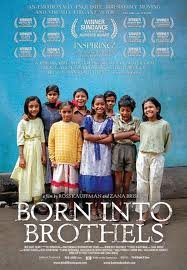


Ryan's Post :):):):):)
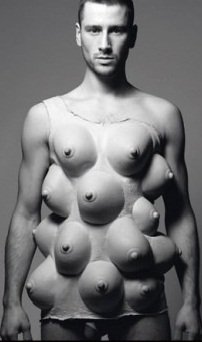
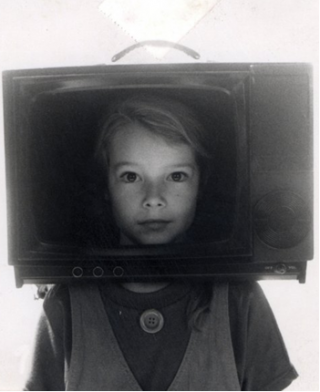
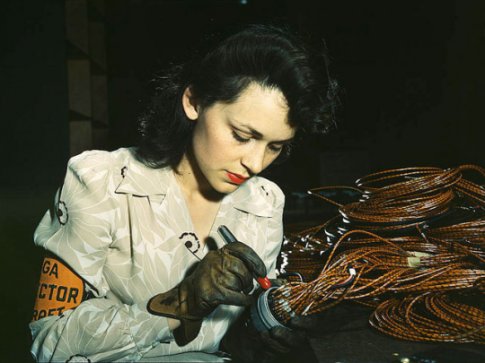
arielle's post
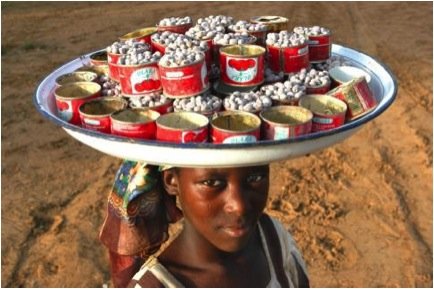


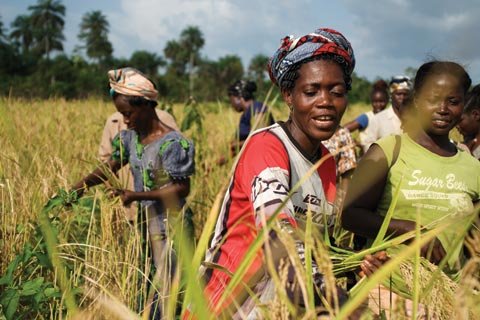
(Stewart, 2010, p. 32).
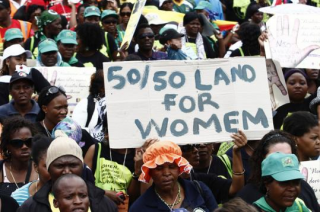

Alec's Post

